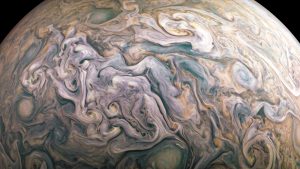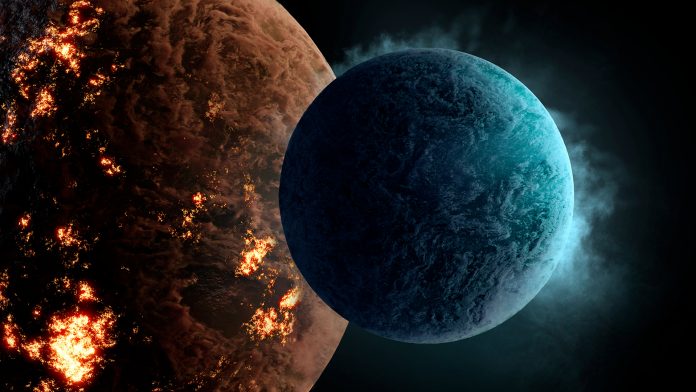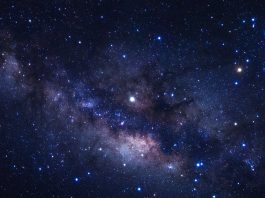Giant gas planets can be agents of chaos, ensuring nothing lives on their Earth-like neighbours around other stars.
A series of new studies have shown that in some planetary systems, the giant gas planets tend to kick smaller planets out of orbit and wreak havoc on their climates.
Jupiter, by far the biggest planet in our Solar System, plays an important protective role. Its enormous gravitational field deflects comets and asteroids that might otherwise hit Earth, helping create a stable environment for life.
However, giant planets elsewhere in the Universe do not necessarily protect life on their smaller, rocky planet neighbours.
‘Surrounded by Giants: Habitable Zone Stability Within the HD 141399 System,’ a new paper detailed in The Astronomical Journal, explains how the pull of giant gas planets in a nearby star system is likely to toss their Earth-like neighbours out of the ‘habitable zone’.
Using computer simulations to understand the behaviour of giant gas planets
Unlike most other known solar systems, the four giant gas planets in HD 141399 are farther from their star.
This makes it a good model for comparison with our Solar System, where Jupiter and Saturn are also relatively far from the Sun.
“It’s as if they have four Jupiters acting like wrecking balls, throwing everything out of whack,” said Stephen Kane, UC Riverside astrophysicist and lead author of the journal paper.
Taking data about the system’s planets into account, Kane ran multiple computer simulations to understand the effect of these four giant gas planets.
He wanted specifically to look at the habitable zone in this star system and see if an Earth could remain in a stable orbit there.

Kane explained: “The answer is yes, but it’s very unlikely. There are only a select few areas where the giants’ gravitational pull would not knock a rocky planet out of its orbit and send it flying right out of the zone.”
How can planets within habitable zones destroy chances of life?
While this paper shows giant planets outside the habitable zone destroying the chances for life, a second related paper shows how one big giant gas planet in the middle of the zone would have a similar effect.
Also published in the Astronomical Journal, the second paper examines a star system only 30 light years away from Earth called GJ 357.
“The galaxy is estimated to be 100,000 light years in diameter, so this system is definitely in our neighbourhood,” Kane stated.
Earlier studies found that a giant gas planet in this system, named GJ 357 d, resides in the system’s habitable zone and has been measured at about six times the mass of the Earth. However, the paper explains that the mass is likely much bigger.
“It’s possible GJ 357 d is as much as ten Earth masses, which means it’s probably not terrestrial, so you couldn’t have life on it,” Kane explained.
In the second part of the paper, Kane and his collaborator, UCR planetary science postdoctoral scholar Tara Fetherolf, demonstrate that if giant gas planets are much larger than previously believed, it is certain to prevent more Earth-like planets from residing in the habitable zone alongside it.
Though there are also a select few locations in the habitable zone of this system where an Earth could potentially reside, their orbits would be highly elliptical around the star.
Kane said: “In other words, the orbits would produce crazy climates on those planets. This paper is really a warning, when we find giant gas planets in the habitable zone, not to assume they are automatically capable of hosting life.”
He concluded: “Our work gives us more reasons to be very grateful for the particular planetary configuration we have in our Solar System.”
Ultimately, the pair of papers shows how uncommon it is to find the right set of circumstances to host life elsewhere in the Universe.









